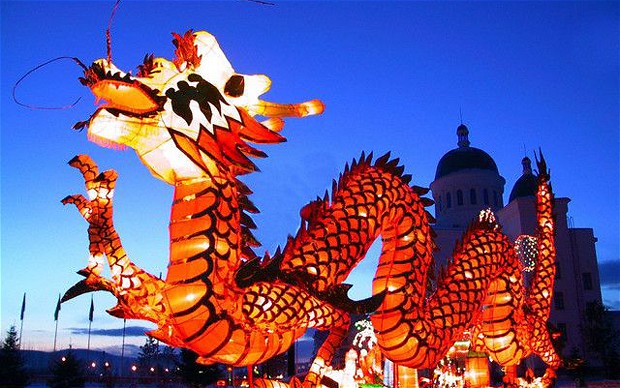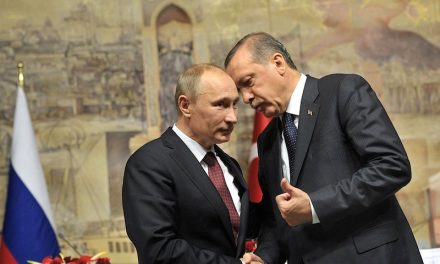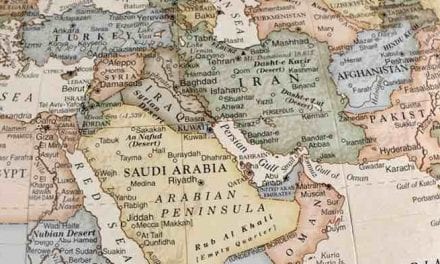By Dr. Naser Al-Tamimi, Arab News
The Institute of West-Asian and African Studies at the Chinese Academy of Social Sciences, one of the most prestigious research institutions in China, released at the end of last month its annual report on development in the Middle East, the Yellow Book.
The report argues that a new situation is emerging in the Middle East, represented by a decline in the influence of Western powers, especially the US, while the Chinese and Russian models are attracting more attention. Certainly, since President Xi Jinping launched the Belt & Road Initiative (BRI) in 2013, the Middle East has been expected to play a crucial role in facilitating this ambitious project. There are six indicators that support this conclusion.
The first is energy. One of the driving factors of BRI is to secure access for China to energy resources. Despite China’s efforts to diversify its oil imports, Middle Eastern and African countries still supply China with two in every three barrels of Beijing’s total crude imports. This figure is expected to rise over the long term, because of two important factors: First, the Middle East will remain the largest oil producing region; secondly, all scenarios (even the most pessimistic) expect China’s oil imports to increase.
Meanwhile, China’s gas imports are expected to increase significantly over the next two decades. This may give countries in the Middle East an opportunity to strengthen their relations further in the future.
Second, economic growth; future growth in the global economy is expected to be concentrated near the Maritime Silk Road, particularly in East Asia, Africa and the Middle East. To be sure, almost two thirds of China’s from 2005 to 2017 were concentrated in countries bordering the Maritime Silk Road in areas such as ASEAN, the Middle East, Africa, and Europe. Looking forward, it will be reasonable to expect that Chinese investments will increase in these regions, in line with future global trade trends.
Third, logistics costs; the new Silk Road linking China to Europe through Central Asia, Russia, Iran and Turkey is important, but it is not expected to compete with shipping lines. According to official Chinese figures, shipping accounts for almost 90 percent of China’s foreign trade. This will not change much over the next two decades, for good reasons, the most important of which is that shipping is more efficient, cheaper and less complicated, and does not need to cross the borders of several countries.
An influential Chinese research institution says Beijing will play an increasing role in the region, and there are six reasons they’re right.
Dr. Naser Al-Tamimi
In addition, future growth in the global economy is expected to be concentrated near the Maritime Silk Road, especially in East Asia. Chinese companies had confirmed seaport investments or port ownership in 34 countries by September 2017, with 12 planned investments in another eight countries.
Next, the construction market; growth in the global construction industry will accelerate in the coming years. Emerging markets across Asia, the Middle East and Africa will be home to the fastest-growing construction industries in the world over the next 10 years. This is in addition to the huge reconstruction operations needed in countries such as Iraq, Syria, Yemen and Libya, which require hundreds of billions of dollars. These developments will provide huge opportunities for Chinese companies to increase their investment and economic activities in the region.
Fifth is military relations; China may also play an important role in supplying the countries of the Middle East with the weapons and technology that Western countries are refusing to sell, such as long-range missiles, drones and satellite technology. In this regard, China’s military capabilities are developing steadily, and in the medium to long term many Chinese weapons systems will be able to compete with Western countries and Russia in the Middle East and Africa, which in turn could increase China’s military presence in the region.
The International Institute for Strategic Studies has highlighted China’s growing military capabilities: “China’s military progress highlights that Western dominance in the field of advanced weapons systems can no longer be taken for granted … With China looking to sell more abroad, they may confront more advanced military systems, in more places, and operated by a broader range of adversaries.”
Finally, the Chinese people themselves; the overseas Chinese community is growing significantly and needs protection in the event of terrorist acts, piracy or political unrest. The number of people of Chinese origin and Chinese expatriates living in the Middle East and Africa is about 1.6 million, including more than half a million in the Middle East alone.
In this context, ties between China and the Middle East are projected to grow steadily and diversify over the coming decades and the forces for further engagement are strong.
• Dr. Naser Al-Tamimi is a Middle East researcher, political analyst and commentator in the UK with interests in energy politics and Gulf-Asia relations.



















